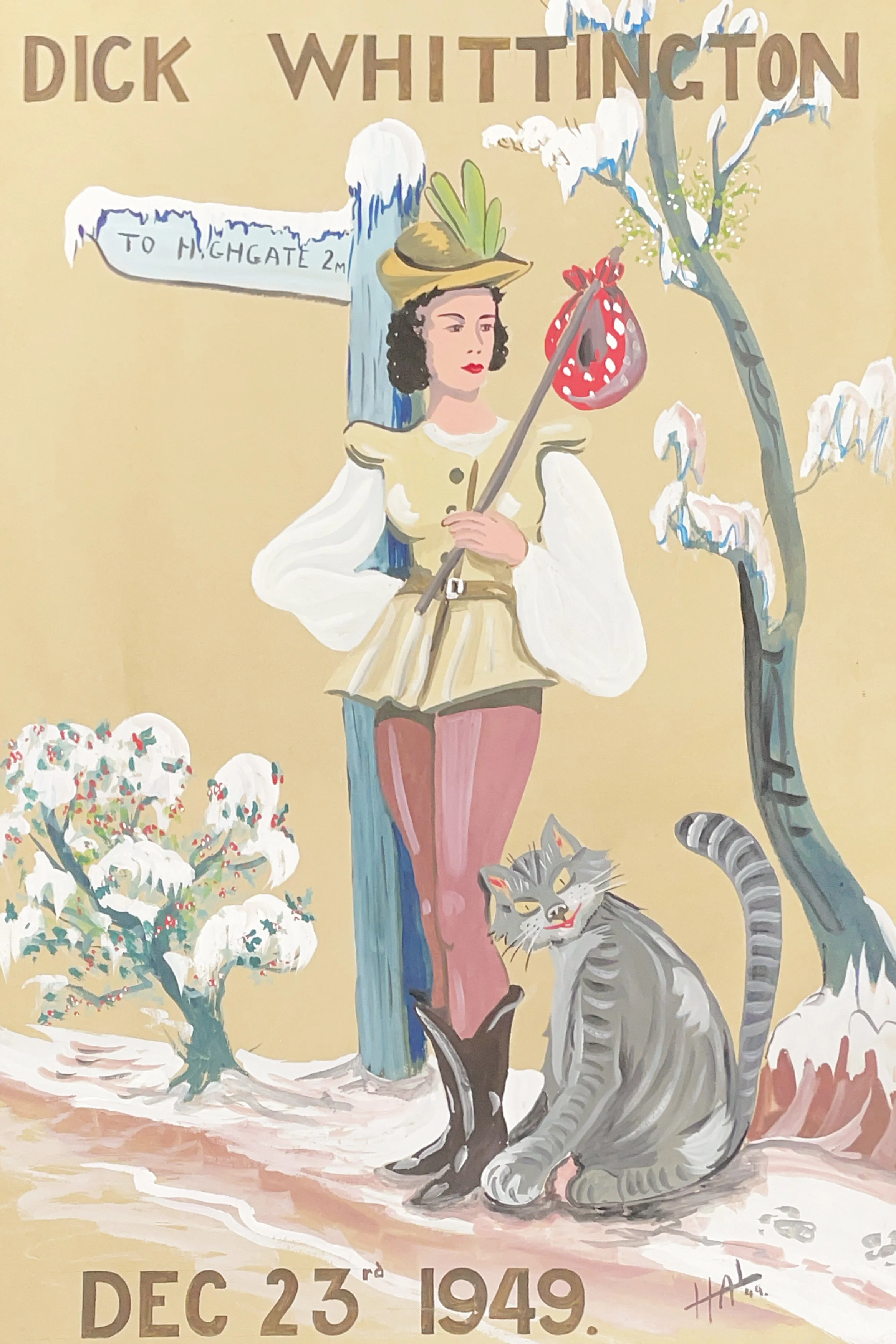Spotlight on: THEATRE ROYAL WINDSOR
In October 2024, it will be the first anniversary of the death of great British theatrical impresario Bill Kenwright and a few months later, it will be the 114th anniversary of the opening of the current Theatre Royal in Windsor, which has a central role to play in his immense theatrical legacy. Kenwright used to claim that his first ever professional stage role as an actor was on the Windsor stage in the 1960’s and this connection adds to the fascinating history of the building and the poignancy of its connection with his company.
The current Edwardian Theatre opened on 13 December 1910 after a fire destroyed the first theatre on the site (some of which was incorporated into the second building). There have been three distinctive periods of operations in the years since. Sir William and Captain Reginald Shipley were the original owners of the, then, 850 seat venue, although 380 of those were in the Gallery, but the emergence of cinema and the talkies threatened its continuation as a theatre in the late twenties and early thirties of the last century.
The second distinctive era was under the management of John Counsell and his wife Mary Kerridge who first took over in 1933 and continued to programme and run it as a family until 1986, just before his death. Their daughters, Jenny and Elizabeth Counsell, would have made their first stage appearances on this stage. Jenny’s life is commemorated in one of the boxes and Elizabeth is still a regular visitor to the theatre, sustaining that connection with the past.
They programmed first a weekly repertory schedule, then in the late 1950’s, fortnightly Rep before extending to three-week runs in the Sixties. Repertory was such a staple of so many regional venues at this time and a vibrant place for young performers to learn their stage craft started to lose its appeal as TV drama standards rose and audiences found the lower production values of theatre produced at a pace to be less appealing. As John Counsell wrote in his 1973 book Play Direction (2), the rehearsal schedule of a production was between two and three weeks depending on the run of the play. Counsell sets out a schedule with off book by day 9 of rehearsals and the dress on the 19th day! Rehearsals took place in the daytime before the current show in the evening.
Photo credit: Jack Merriman
However, he also noted that the venue operated at least 75% capacity over this period across the year and that there was a virtuous circle of higher production standards generating higher audience numbers. He noted that in a programme for the year, it required a balance between artistic and financial on costs and earning power which remains true today.
The building was Grade Listed and was substantially refurbished by Carl Toms in 1965, with further improvements in 1973,1994 and 2018. It now seats 633 with its highest tier now blocked off. Toms also designed the cover for the programme, Curtain Up which was recently revived for Hamlet and The Cherry Orchard.
The third era began in 1997, when Bill Kenwright acquired a long lease from the Royal Borough of Windsor and Maidenhead, and included the venue in his plans for touring productions. His companies have produced over 500 productions for stage and film with huge hits such as Blood Brothers set in his beloved Liverpool, which continues to move audiences after over forty years. After Covid, Bill was determined to reopen the Theatre Royal as soon as possible on a socially distanced basis and a new pattern of key shows was established.
Sean Mathias has recently directed two shows a year at the venue. In 2021, Sir Ian Mckellan in Hamlet and in The Cherry Orchard, in 2022 he directed Dial M for Murder and Chalk Garden, in 2023 he directed new works Frank & Percy with Sir Ian McKellan and Roger Allam (which went on to sell out in London), and Alone Together with Martin Shaw and Jenny Seagrove, and in 2024 has staged the wonderful Emlyn Williams’s Accolade with Honeysuckle Weeks and later in the year on 4 October, Felicity Kendal in Filumena. In the current theatre market, audiences are selective and it needs star names and well-known titles to drive interest. They have also developed “On Air” productions which are staged radio shows with a costumed cast, script in hand and foley artistes adding sound effects. A Christmas Carol returns on 12 November for a week. Bill’s legacy of bold productions is sustained by the world premiere of The Gates of Kiev by Ian Kelly in September about the power of music to change the world.
Another element in the programme is the return of repertory style theatre with three weeks of transfers from Sidmouth Repertory Company directed by Paul Taylor Mills. This year, they showed House Guest, Hay Fever and Perfect Crime, with tickets priced at £20. They are a reminder of the fare that Counsell would have produced decades earlier, classic plays produced on a tight budget. When I caught Hay Fever, it had a strong nostalgic feel with its standard box set, clipped Noel Coward witticisms and a cast making up for lack of rehearsal time by throwing themselves wholeheartedly into the bizarre set of characters to provide an entertaining show and a sense of throwback to the Counsell era.
Of course, the pantomime - which runs for seven weeks over Christmas - remains a very important element of the programme for the year and selling over 80% of capacity generates vital surpluses to support the venue throughout the rest of the year. This year’s pantomime is Dick Whittington, with the return of Kevin Cruise as the comic, Steven Blakeley as the Dame and Basil Brush adding his own inimitable boom booms. This regular team have been attracting audiences back to Windsor for fifteen seasons.
The tradition of pantomime at the Theatre Royal Windsor goes back to 1938 (1) when they staged Aladdin and has been an annual fixture for the eighty-five years since, including through the years of the Second World War when Counsell was called up and wrote programme notes from the war front. The venue was run in his absence by Oliver Gordon and Arnold Pilbeam. The annual show attracted some famous names from the period as well as involving the whole Counsell family in the shows. Their Cinderella from December 1946 to January 1947 starred Mary Kerridge as Dandini, with a script by Lupino Lane and music by Noel Gay. A year later, Aladdin was devised by John Counsell with music by Noel Gay and costumed by Mary Kerridge. In Jack and Beanstalk in 1950, Patrick Cargill as King Rumptytum, returning in Cinderella in 1951 with Mary Kerridge as Dandini and a book and lyrics by Mary Kerridge, in 1952 in Robinson Crusoe as Man Friday and in Goody Two Shoes in 1953 with Una Stubbs and Gillian Lynne.
In 1956, in Dick Whittington, Patricia Routledge was Dick but the Counsell daughters, Elizabeth and Jenny, worked as puppeteers and then appeared in Cinderella in 1958 as Fop and Frip with Derek Nimmo as a brokers man. The 1962 production of Mother Goose, written by Mary Kerridge, featured Elizabeth Counsell as Colin and Jenny Counsell as Gretchen with another British impresario, Ray Cooney as Jack. The sense of history of what has gone before still dominates the theatre with the many black and white photos of the shows from this era decorating the walls, and featuring Mary Kerridge alongside a host of other famous names.
Of course, nestled as the theatre is in the shadows of Windsor Castle and with Royal in the name, it must be tempting for members of the Royal Family to pop in and see a show. King George VI and Elizabeth attended A Rose Without a Thorn in 1938.
On 16 June 1965, there was a gala performance to celebrate the refurbishment. In attendance for this was HM The Queen (Elizabeth II), Prince Philip/Duke of Edinburgh, The Queen Mother, Princess Margaret & Early Snowdon, Duke & Duchess of Gloucester, Princess Marina, Princess Alexandra and Mr Ogilvy, and Prince Charles of Luxembourg. HM The Queen Elizabeth II and the Queen Mother visited in 1988. In May 2024, it was announced that King Charles III had accepted the patronage of the theatre previously held by his mother sustaining the Royal connection.
The theatre is now run by husband-and-wife team, Anne-Marie and Jon Woodley, who met at the venue and took over the day-to-day operations in 2019. Bill’s partner actress Jenny Seagrove has taken on the Chair of his companies. Thus, together, they are sustaining the unique sense of family continuity that has dominated the successful periods of this historic venue and despite being one of the few venues in the UK operating without subsidy, working hard to attract audiences and deliver on the legacy of one of the most influential drama producers of the last fifty years.
At any time of the year, Windsor is a great day out . The changing of the guards in the morning, lunch at the Windsor and Eton Brewery, a boat trip along the Thames in the afternoon, a backstage tour of the theatre and a ticket to the theatre in the evening. What could be a better celebration of British culture? Bill Kenwright’s passion for theatre (and football) was legendary. He had intuitive judgement of that balance between artistic quality and financial risk and people with his skills are going to be needed more than ever over the next decade to sustain British regional theatre as we set out in our article below:
A WEBF Article: Besties' Manifesto for Sustainable Theatre | West End Best Friend
Written by: Nick Wayne
Nick was born in Windsor and has been involved in Producer and Venue Organisations for twenty-five years, seen over 1200 productions, visited over 160 of the UK venues and invested in over 30 West End productions
References :
Putting on Panto to pay for the Pinter, Chris Abbott.
2. Play Direction , John Counsell



